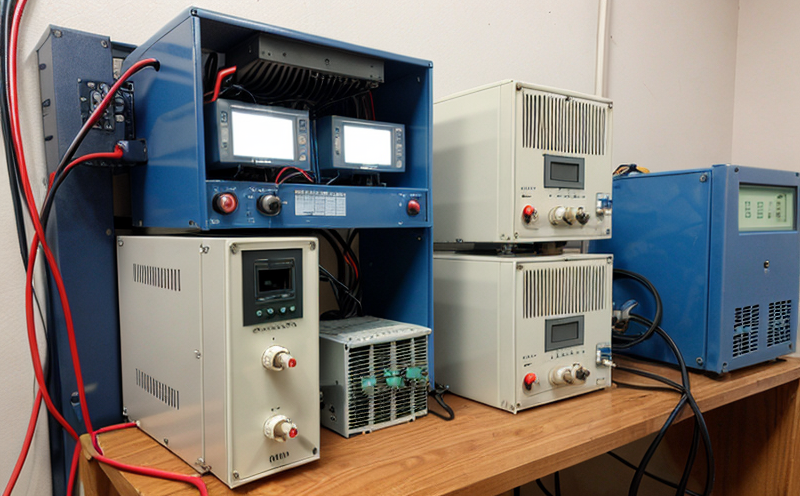IEC 62477 Safety Testing of Power Electronics for Railways
The International Electrotechnical Commission (IEC) Standard IEC 62477-1 defines the safety requirements and tests for power electronics in railway applications. This standard ensures that electrical systems used in railways are safe, reliable, and meet the stringent safety criteria required by the industry.
Power electronics play a critical role in modern rail systems, providing efficient control over electric motors and generators. They also manage power distribution and ensure reliability across various components like traction converters, inverters, and chargers. The tests outlined in IEC 62477-1 are essential to validate the safety of these components under real-world conditions.
The standard covers a range of electrical parameters including insulation resistance, dielectric strength, overvoltage protection, and electromagnetic compatibility (EMC). It also includes specific requirements for temperature stress testing, mechanical shock, and vibration. Compliance with IEC 62477-1 is crucial for manufacturers to ensure their products meet global safety standards.
For quality managers and compliance officers responsible for ensuring product safety, this standard provides a clear framework for testing. R&D engineers can use it as a benchmark when developing new power electronics solutions. Procurement teams may also find the standard valuable in evaluating suppliers' adherence to international best practices.
The tests outlined in IEC 62477-1 are designed to simulate real-world operating conditions, ensuring that power electronics perform reliably and safely under various stress scenarios. This includes testing for overvoltage protection, which is crucial given the dynamic nature of railway environments where electrical surges can occur.
Another critical aspect is electromagnetic compatibility (EMC), ensuring that electronic devices do not interfere with each other or cause interference to external equipment. This is particularly important in rail systems where multiple power electronics units are interconnected.
The standard also includes requirements for temperature stress testing, mechanical shock, and vibration tests. These ensure that the components can withstand environmental stresses encountered during operation. Compliance with these requirements helps manufacturers meet global safety standards, facilitating easier market entry and international acceptance of their products.
Compliance with IEC 62477-1 is mandatory for railway equipment manufacturers aiming to achieve certification in Europe or other regions that adhere to this standard. It also ensures seamless integration into existing rail systems without compromising on safety and reliability.
Scope and Methodology
The scope of IEC 62477-1 encompasses the design, manufacture, installation, commissioning, operation, and maintenance of power electronics for railway applications. The standard specifically addresses the safety aspects related to these components.
- Insulation Resistance: Testing insulation resistance ensures that electrical connections are secure and prevent short circuits or other failures due to moisture ingress.
- Dielectric Strength: This test evaluates the component's ability to withstand high voltages without breakdown, which is critical for preventing arcing and ensuring safety.
- Overvoltage Protection: Ensures that components are protected against transient overvoltages, safeguarding them from potential damage or failure.
- EMC Testing: Evaluates the electromagnetic interference (EMI) generated by power electronics to ensure they do not interfere with other systems in a railway environment.
- Temperature Stress Testing: Simulates high and low temperatures encountered during operation, ensuring components remain functional under extreme conditions.
- Mechanical Shock and Vibration Tests: Assess the durability of power electronics against environmental stress factors like mechanical shocks and vibrations.
The methodology for conducting these tests involves rigorous laboratory simulations that closely mimic real-world operating environments. This ensures that any potential issues are identified early in the product lifecycle, allowing for timely corrections before mass production begins.
Testing typically starts with initial inspections of the power electronics to ensure they meet basic design specifications. Following this, insulation resistance and dielectric strength tests are conducted using specialized equipment capable of generating high voltage conditions safely within controlled laboratory environments.
Overvoltage protection is then tested by subjecting the component to controlled overvoltages which simulate real-world surges. EMC testing involves placing the power electronics in a屏蔽





